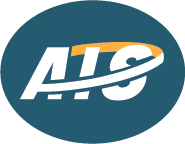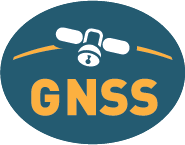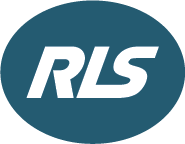Description:
Ocean Signal's new EPIRB3 Pro (Emergency Positioning Radio Beacon) increases reliability and simplifies rescue operations with new advanced features. This new EPIRB broadcasts a digital mayday on 406 MHz, alerting rescuers worldwide via satellite, and locally transmits Automatic Identification System (AIS) VHF signals to help rescuers find the beacon faster. Once activated, the EPIRB3 Pro transmits a distress signal to the Cospas-Sarsat global satellite distress system and simultaneously sends an AIS alert on VHF frequencies, immediately visible to any nearby AIS-equipped vessel. The Return Link Service (RLS) provides the user with visual confirmation of the distress message. The combination of AIS, a 121.5 MHz homing signal, and visible and infrared strobe lights speeds recovery times by allowing rescuers to pinpoint the beacon's location, even if it has moved, regardless of the time of day or night. Near Field Communication (NFC) is a fantastic new feature that allows users to monitor the EPIRB3 Pro via a free smartphone app, ensuring the battery has sufficient charge and the beacon is functioning properly before heading out.
Ocean Signal’s advanced marine safety and distress technology featured in the new EPIRB3 Pro with AIS combines innovative new features in a compact, ergonomic housing, ideal for all types and sizes of recreational and commercial vessels.
Rescue times can improve with global activation combined with local AIS beacon transmission.
The EPIRB3 Pro uses GNSS positioning networks (GPS, Galileo, Glonass) to determine its global position. When the beacon is activated, a 406 MHz emergency transmission forwards the EPIRB's GPS (GPIRB) position, accurate to within 100 meters, to the Cospas-Sarsat global search and rescue satellite network. Ground stations connected to the satellite system receive the EPIRB's identification and location information, allowing them to coordinate and initiate rescue operations. Thanks to the EPIRB's now integrated advanced AIS technology, upon activation the beacon begins transmitting AIS signals so that nearby AIS-equipped vessels are immediately informed of the emergency situation and receive the beacon's position. AIS-equipped vessels within VHF range will display a safety message on their screens that includes the vessel's MMSI. Local vessels can immediately initiate rescue and recovery operations, potentially speeding up recovery times and saving lives. Because an AIS target appears on the onboard display of any nearby AIS-equipped vessel, it can easily navigate to the EPIRB by selecting the AIS target. Even in the absence of available local vessels, AIS will speed up recovery times by allowing maritime SAR operators to precisely pinpoint the EPIRB's position during approach. The combination of global satellite distress calls, precise GPIRB position transmission, and local AIS safety messages will significantly improve recovery times and recovery success.
Near Field Communication (NFC) technology enables EPIRB diagnosis via a smartphone.
Beacon users can now control their EPIRB by connecting their smartphone via NFC (Near Field Communication) . This technology connects a smartphone placed near the EPIRB3 and automatically launches the free Ocean Signal app. The app offers comprehensive diagnostics that show the user the current battery life, the number of self-tests completed, the number of GNSS tests completed, and the EPIRB activation time. Detailed information is also conveniently displayed, including a map showing where a GNSS test was performed, the date and time of the test, the time it took the EPIRB to obtain a fix on the GNSS coordinates, the number of satellites used to obtain that fix, and the accuracy of the fix. The free Ocean Signal mobile app and NFC functionality provide users with all the information they need to confirm their EPIRB is fully functional and ready for use in an emergency.
The convenient Return Connection Service (RLS) notifies users that the distress call has been received.
EPIRBs are used in emergencies, and rescue operations can take time, especially if the vessel in distress is offshore. The EPIRB3 Pro features a return link service (RLS), which notifies users that a distress signal has been received via a radio beacon. The RLS signal is sent via the Galileo satellite network to confirm receipt of the distress message, along with the EPIRB's precise location and identifiers. A simple flashing blue light informs users that the EPIRB has successfully connected via the satellite network, and rescuers will be notified. Knowing that the digital distress signal (mayday) has been successfully transmitted, along with the EPIRB's identification and beacon location, helps people in distress remain calm while awaiting rescue operations.
Mounting bracket
The EPIRB3 Pro features a Category 1 self-releasing floating mounting bracket. This bracket securely holds the EPIRB3 Pro throughout your journey, regardless of weather conditions. It also offers the best possible activation chance in emergency situations where it is difficult for a crew member to reach the EPIRB.
Ocean Signal uses advanced technologies and high-quality manufacturing processes to develop and produce high-quality distress electronics and other life-saving products. The new EPIRB3 Pro, with its sleek profile, is suitable for both sailing and motorboats. Both recreational and commercial users can be confident that the features of this new EPIRB offer the greatest chance of efficient and successful rescue, wherever they are. The EPIRB3 Pro's numerous high-tech features combine with a unique design that allows for effective use on all types of vessels, whether conducting work or leisure activities near the coast, on the open sea, or at sea.
Somatic traits:
-
Approved for use on SOLAS vessels
-
30% (typical) smaller
-
AIS distress alert
-
Return Connection Service (RLS)
-
Mobile connectivity via Near Field Communication (NFC)
-
Free app (Apple and Android)
-
10-year battery life
-
48+ hours of operating life
-
2-year warranty (can be extended to 5 years by registering your product with Ocean Signal)
-
Fast and accurate positioning with 72-channel GPS
-
Floating bracket with automatic release category I
- Safety cord

406 MHz and 121.5 MHz signals

Visible light and IR strobe

Compatible with MEOSAR

Integrated AIS warning

Multi-GNSS

Return Connection Service (RLS Compatible)
































